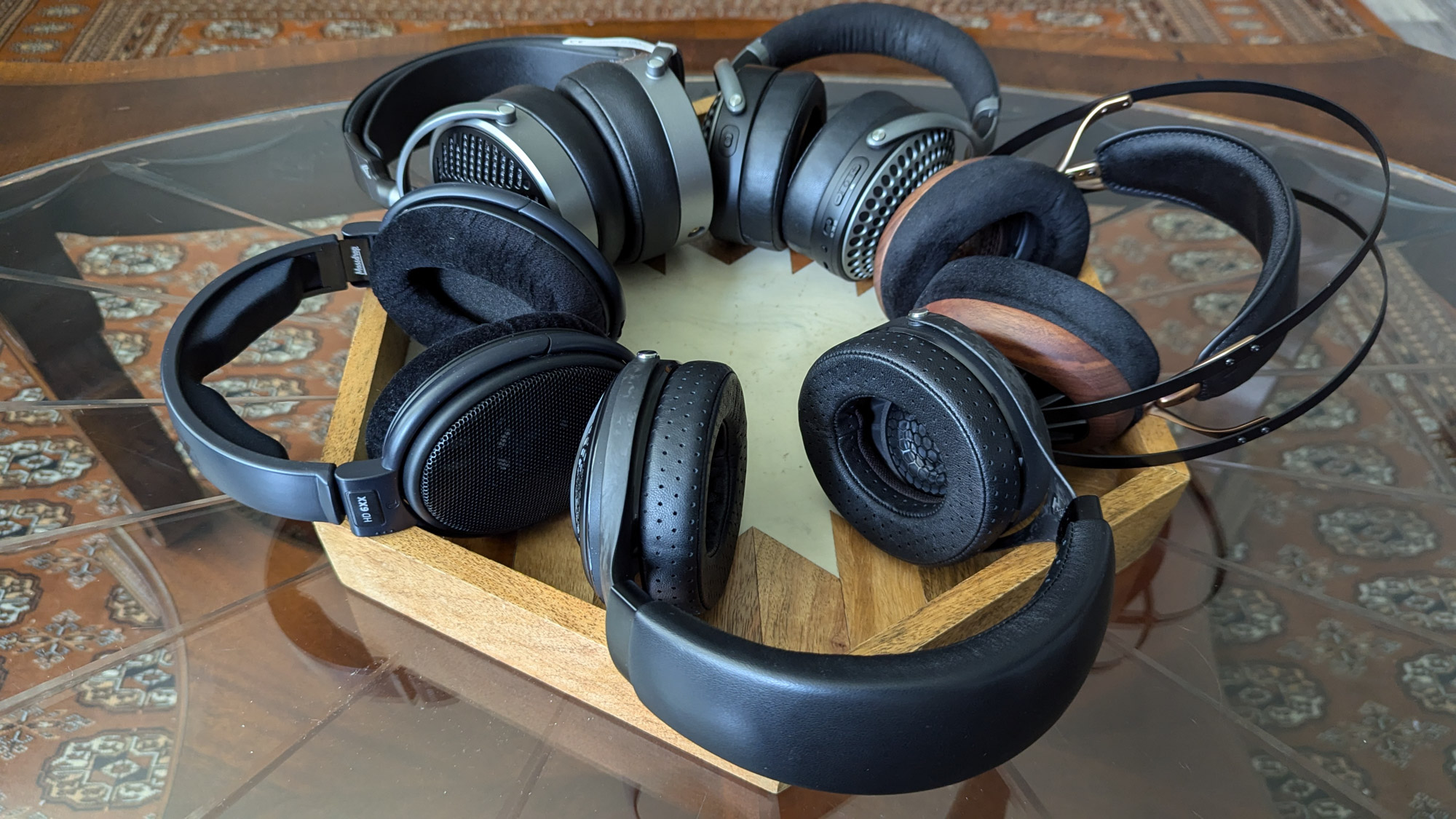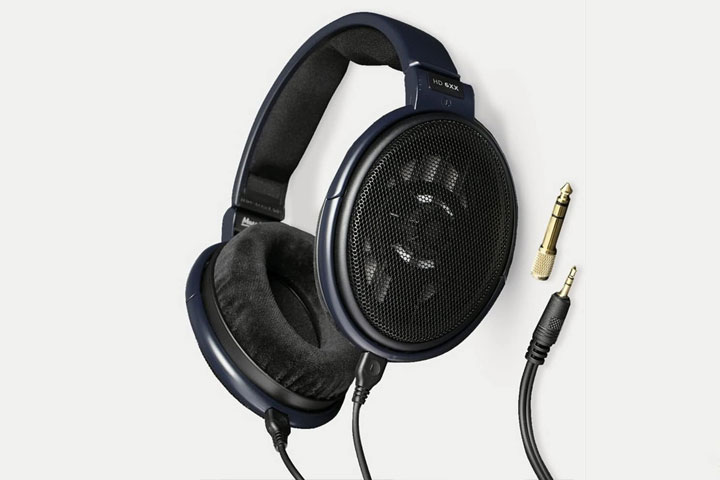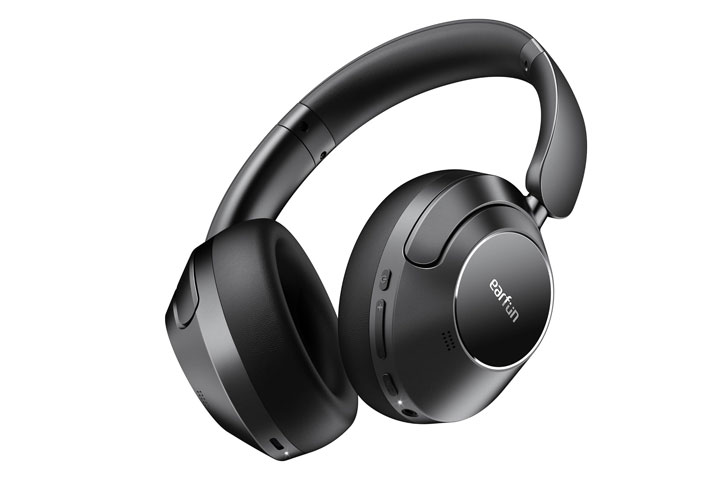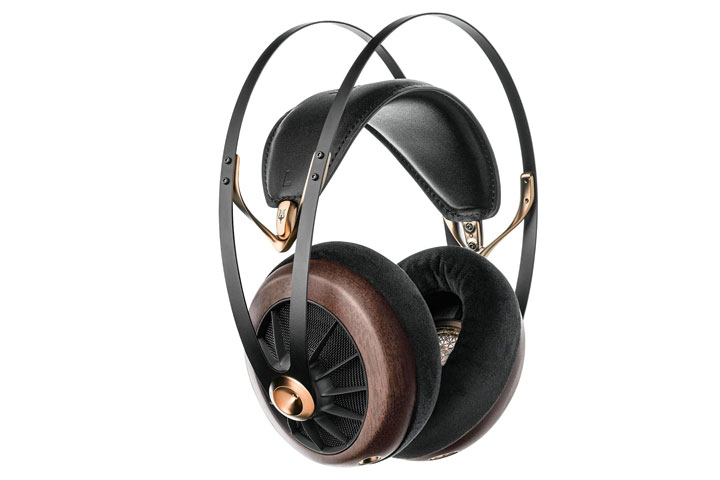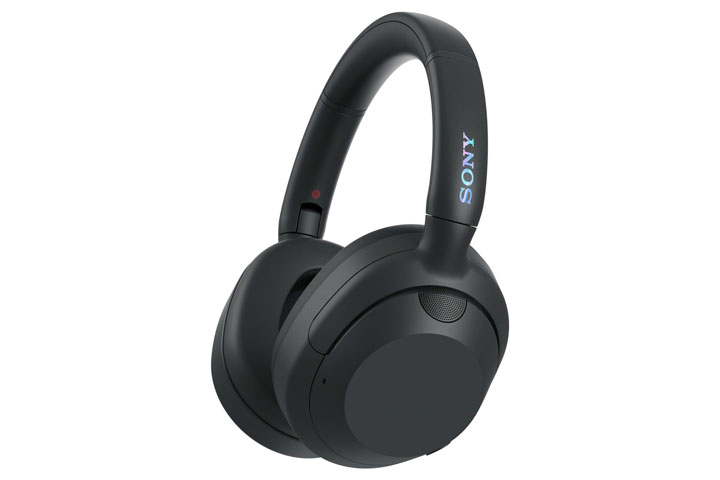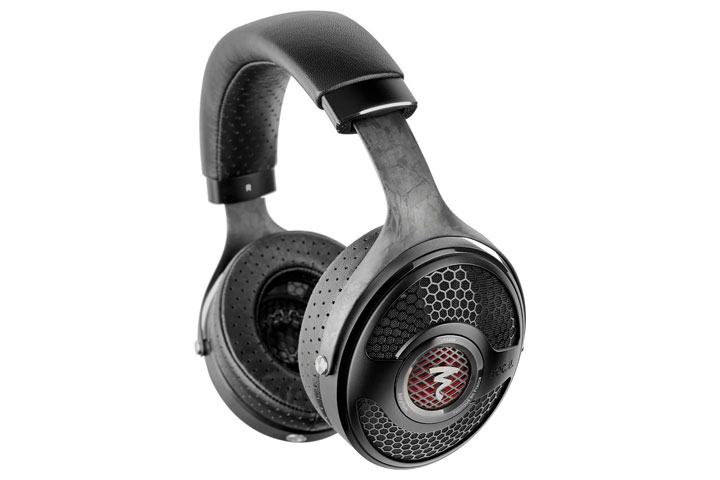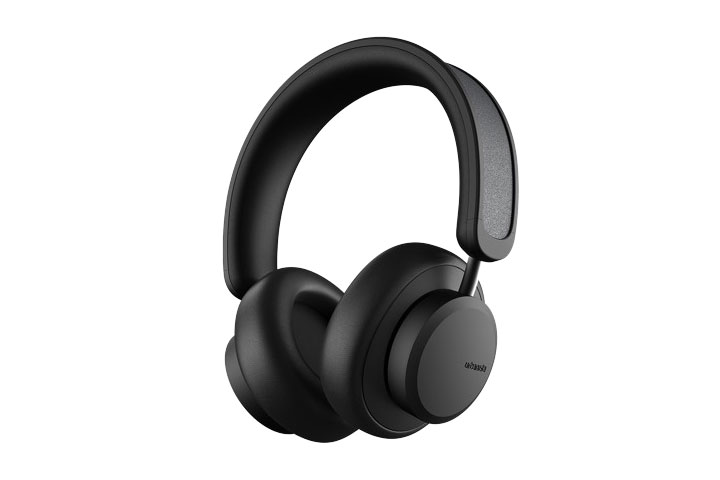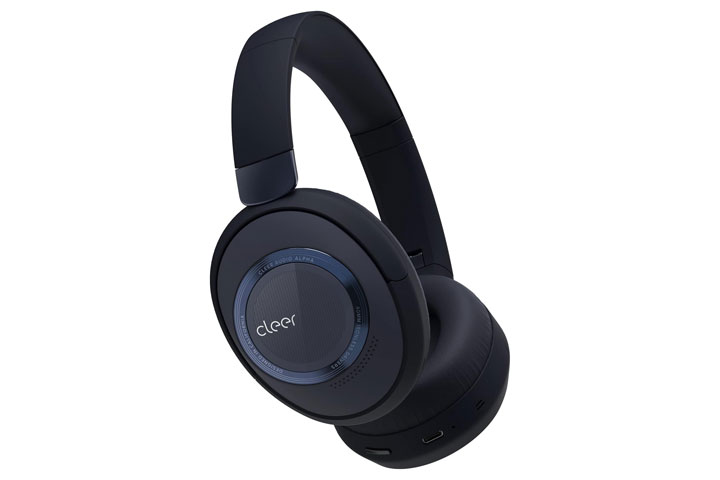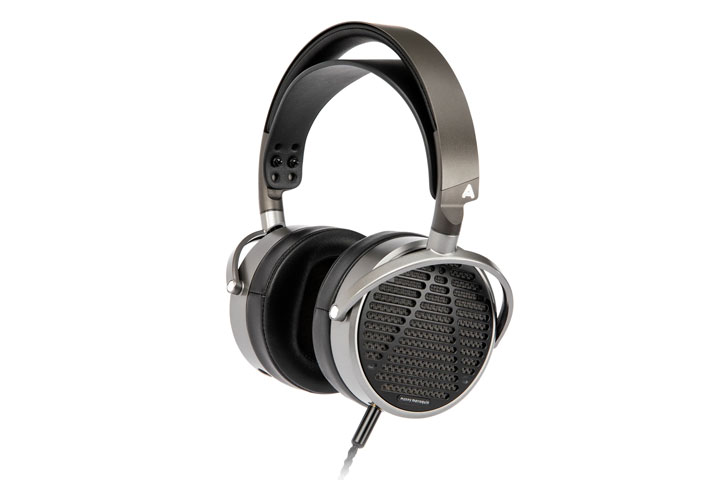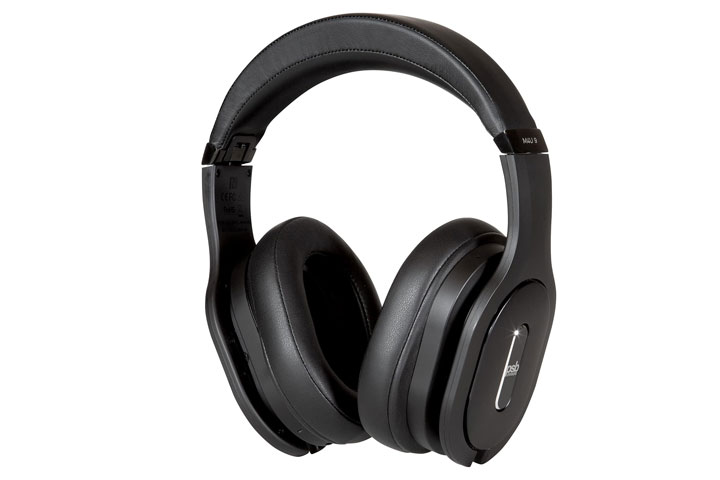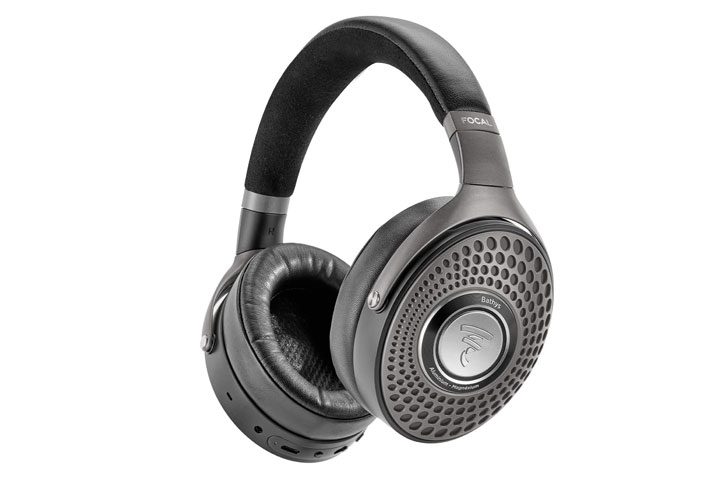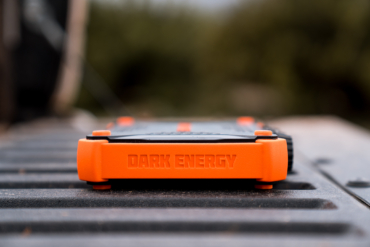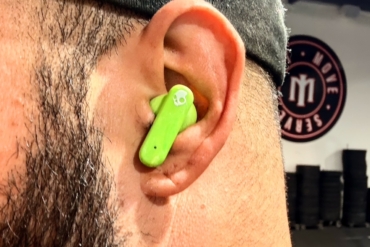The pursuit of headphone excellence — or even happiness — can be a neverending rabbit hole. Ultimately, finding the best headphones for you depends on your attitude, goals, and budget. And the cans that might work well for your particular use case might not be ideal for someone else’s. After all, headphones are a very subjective and highly contestable consumer electronics category.
Our experts have written about headphones, earbuds, speakers, and other audio products for over a quarter century. During that time, wireless headphones have certainly emerged as a huge subcategory. But their traditional wired counterparts are still plenty viable, offering a blend of sound quality, durability, and relative affordability.
Specifically for this buyer’s guide, our online research and personal experiences helped us identify over a dozen circumaural (over-ear) headphones ranging in price from $80 to $5,000. After careful consideration, we narrowed down the candidates to 10 favorites that we tested in real-world conditions.
Editor’s Note: For our November 26, 2024, update, we added a Price & Value section to show what buyers get with different price points.
The Best Headphones of 2024
- Best Overall Headphones: Drop x Sennheiser HD 6XX
- Best Budget Headphones: EarFun Wave Pro
- Most Stylish Headphones: Meze Audio 109 Pro
- Best Headphones for Bass: Sony Ult Wear
- Best Premium Headphones: Focal Utopia (2022)
Drop x Sennheiser HD 6XX
- Weight: 260 g
- Frequency range: 10 Hz – 41 kHz
- Format: Open-back, wired
- Accessories included: ¼-inch adapter
Pros
- Very lightweight
- Superior midrange presentation
- Smooth and clear throughout the frequency range
- Excellent value for the performance
- Modular, works well with aftermarket parts
Cons
- Wired, open-back format limits use cases
- High impedance
- Tight clamping force
- Bass may not satisfy the masses
- Don’t include a case
EarFun Wave Pro
- Weight: 268 grams
- Frequency Range: Up to 40 kHz
- Format: Closed-back, wireless
- Accessories Included: Carrying case, audio and charging cables
Pros
- Unexpectedly clean, premium sound
- Fast charging and up to 80-hour battery life
- Nice button layout
- Good app with lots of options/controls
- Hard case with inner webbing to hold spare cords
Cons
- Earcups may get a little warm when listening long
Meze Audio 109 Pro
- Weight: 375 grams
- Frequency Range: 5 Hz – 30 kHz
- Format: Open-back, Wired
- Accessories Included: Carrying case, small pouch for extra audio cable and 1/4-inch adapter
Pros
- Distinctive design and materials
- Fun sound with elevated bass and treble
- Self-adjusting headband
- Nice hard case with inner pouch for cables
Cons
- Relatively expensive
- A little on the bright side
Sony Ult Wear
- Weight: 255 grams
- Frequency Range: 5 Hz – 20 kHz
- Format: Closed-back, Wireless
- Accessories Included: Carrying case, audio and charging cables
Pros
- Amazing bass
- Super lightweight and comfy
- Good blend of button and gesture controls
- Feature-rich app
- Fold nicely into their hard travel case
Cons
- Bass on highest setting may be slightly bloated
Urbanista Los Angeles Hugo Edition
- Weight: 325 grams
- Frequency Range: 20 Hz – 20 kHz
- Format: Closed-back, Wireless
- Accessories Included: Carrying case, charging cable
Pros
- Virtually limitless battery life
- Limited edition looks stylish
- Nice, smooth headband adjustment mechanism
- Impactful bass
- Cool case still allows the solar panels to charge
Cons
- High clamping force
- Volume rocker button a bit tricky to get used to
- They press on the ears and get warm
- No headphone jack
- Weight: 330 grams
- Frequency Range: 20 Hz – 40 kHz
- Format: Closed-back, Wireless
- Accessories Included: Carrying case, audio and charging cables, airplane adapter
Pros
- Very comfortable
- Strong value for ANC headphones
- Decent touch controls
- Great for travel
Cons
- Barebones app
- Battery life isn't great
- Weight: 475 grams
- Frequency Range: 20 Hz – 25 kHz
- Format: Open-back, Wired
- Accessories Included: Storage pouch, 1/8-inch adapter
Pros
- Comfortable self-adjusting headband
- Extremely crisp and detailed sound
- Single wired connection to either earcup
- Affordable for planar magnetics
Cons
- Still feel heavy
- A little expensive
- Weight: 362 grams
- Frequency Range: 10 Hz – 23 kHz
- Format: Closed-back, Wireless
- Accessories Included: Carrying case, extra earpads, audio and charging cables, 1/4-inch and airplane adapters
Pros
- Very comfortable with spacious earcups
- Tactile, well-placed buttons
- Great sound personalization
- Plenty of included accessories
Cons
- Expensive
- Creaky build
- Extra earpads can be tricky to swap out
- Weight: 350 g
- Frequency range: 15 Hz – 22 kHz
- Format: Closed-back, wireless
- Accessories included: Carrying case, audio, and charging cables
Pros
- Open and bright sounding for closed-backs
- Features a built-in DAC
- Opulent styling
- Well-designed carrying case
Cons
- Very expensive
Headphones Comparison Chart
| Headphones | Price | Weight (grams) | Frequency Range | Format | Accessories Included |
|---|---|---|---|---|---|
| Drop x Sennheiser HD 6XX | $219 | 260 | 10 Hz – 41 kHz | Open-back, Wired | ¼-inch adapter |
| EarFun Wave Pro | $80 | 268 | Up to 40 kHz | Closed-back, Wireless | Carrying case, audio and charging cables |
| Meze Audio 109 Pro | $799 | 375 | 5 Hz – 30 kHz | Open-back, Wired | Carrying case, small pouch for extra audio cable and ¼-inch adapter |
| Sony Ult Wear | $200 | 255 | 5 Hz – 20 kHz | Closed-back, Wireless | Carrying case, audio and charging cables |
| Focal Utopia (2022) | $4,999 | 490 | 5 Hz – 50 kHz | Open-back, Wired | Storage box, travel case, XLR cable, ¼-inch adapter |
| Urbanista Los Angeles Hugo Edition | $249 | 325 | 10 Hz – 41 kHz | Closed-back, Wireless | Carrying case, charging cable |
| Cleer Alpha | $250 | 330 | 20 Hz – 40 kHz | Closed-back, Wireless | Carrying case, audio and charging cables, airplane adapter |
| Audeze MM-100 | $399 | 475 | 20 Hz – 25 kHz | Open-back, Wired | Storage pouch, 1/8-inch adapter |
| PSB M4U 9 | $499 | 362 | 10 Hz – 23 kHz | Closed-back, Wireless | Carrying case, extra earpads, audio and charging cables, ¼-inch and airplane adapters |
| Focal Bathys | $699 | 350 | 15 Hz – 22 kHz | Closed-back, Wireless | Carrying case, audio and charging cables |
How We Tested Headphones
Our Testing Process
Truth be told, the GearJunkie staff rocks headphones even when we’re not running or working out. Of course, even among great headphones, different ones stand out for different use cases. So the ones we’d tend to don for long listening sessions while sunk into our favorite easy chair might not be the same ones we’d toss around our neck right before heading out on a hike or commuting into the office.
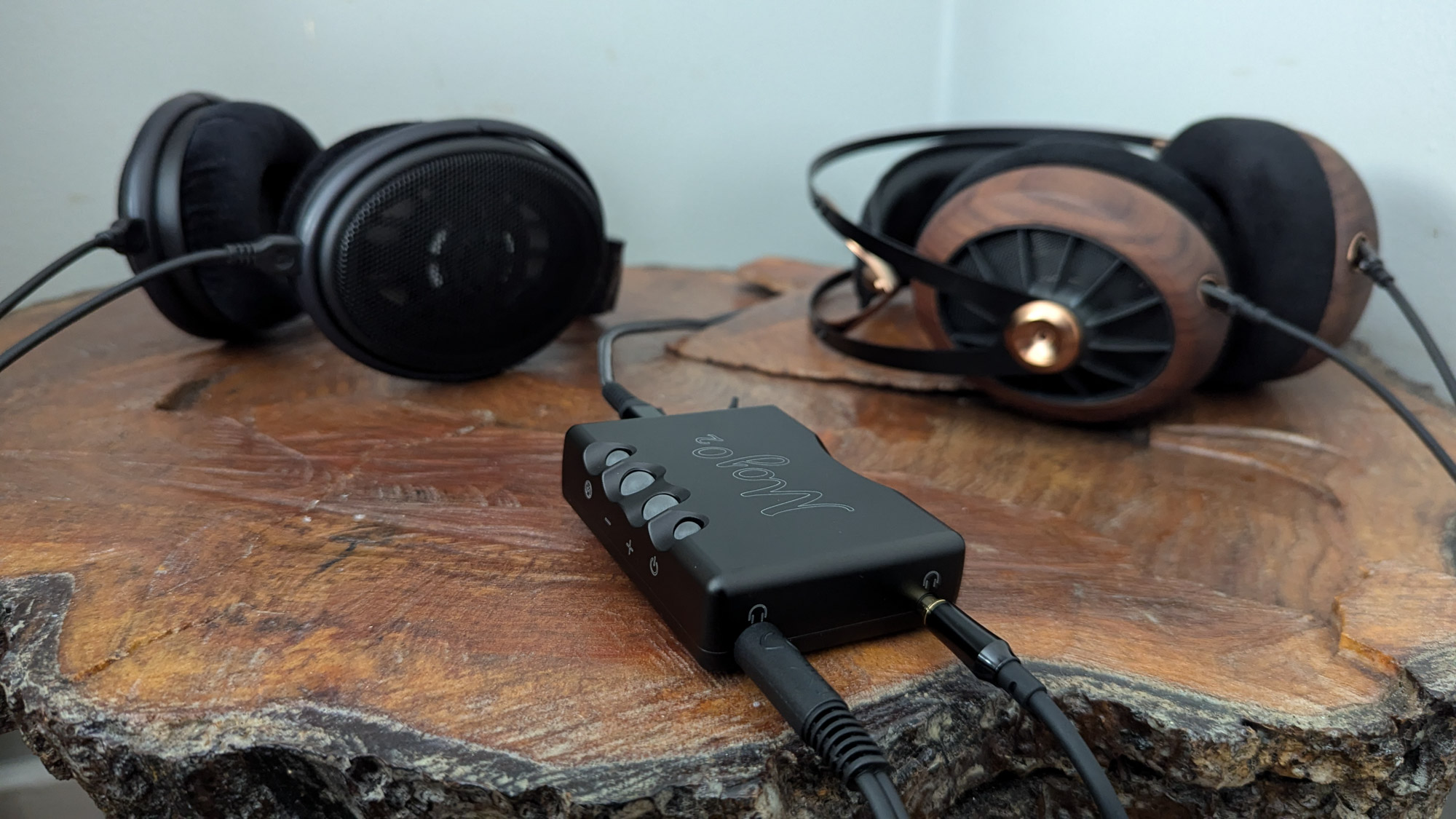
Throughout weeks of auditioning various headsets in different environments, we listened to several familiar playlists. For the wireless entries, we streamed tracks right from Qobuz and Amazon Music to our phone (and then wirelessly to the headphones). By connecting Khadas’ Tea — a slim, MagSafe, combination DAC (digital-analog converter) and headphone amp with an audio jack — to the phone, we were able to listen to those same streaming tracks on wired headphones.
We also listened to high-resolution music stored on DAPs (digital audio players) from Sony Music and Astell & Kern, sometimes by plugging the headphones directly into the source devices and other times by adding Chord Electronics’ compact, well-regarded Mojo 2 into the mix. Since that DAC/amp sports dual headphone outputs, it came in really handy when doing live A/B testing.
In addition to sound quality, we rated all the entries based on factors such as style, adjustability, portability, and price, along with the fit and comfort of the cups and headband. To keep this resource as current and comprehensive as possible, we’ll continue to cull and assess additional headphones for future versions of this guide.
Our Expert Tester
No offense to the serene sounds of Mother Nature, but we at GearJunkie recognize how well music can motivate us to go that extra mile on the trail. Then again, we don’t always want to be that person blasting a Bluetooth speaker outdoors. And especially whenever we’re back at home base, we’re totally content to chill out and focus on privately enjoying our tunes on whatever cans strike our fancy at the moment.
Our lead tester, Scott Tharler, has been writing about audio products and other consumer electronics for over 25 years. Throughout that time, Tharler’s attended CES more than two dozen times and multiple CanJam events, where he’s gotten to experience some of the very finest headphones created. Some of the brands you’ve definitely heard of but many of them you probably haven’t, since it’s its own little world.
In other words, over the years, we’ve had the opportunity to try out literally hundreds of headphones at every imaginable price point. No headphones are perfect — and more expensive ones don’t necessarily equate to commensurately better sound quality. But we’ve been following this category for quite some time, so you can definitely trust us to offer a wide, authentic perspective on what’s what in the world of headphones.

Buyer’s Guide: How to Choose the Perfect Headphones
Selecting a suitable set of headphones can be quite a daunting task. In fact, even just pinning down a format and style can prove to be quite a challenge.
Speaking of which, even though technically all manner of earphones — including wired in-ear monitors, wireless earbuds, and bone conduction headsets — are considered headphones, in this guide, we’re focusing on the circumaural variety. In other words, the kind of headphones with a headband connecting cups that go over your ears. Even in this popular subcategory, making an informed decision to find the right ones requires dedicated thought and research.
Fortunately, this guide packs all the essential info you’ll need to choose the best headphones for you. You’ll learn why you should and shouldn’t consider particular types of headphones and which features matter most. Practically speaking, it’s everything you need to know about purchasing headphones, no matter what the price or form factor.
Form Factor
As we just alluded, headphones come in several form factors. Naturally, your typical use case plays a big part in what style you’ll want to choose, which in turn plays a huge role in your overall fit and comfort.
Over-Ear
Sometimes referred to as circumaural, these naturally bigger headphones feature cups meant to surround your ears — ideally without touching them, depending on the cup size and depth. The main benefit is that they may provide some passive noise isolation, but their fit can also affect the sound signature.
For instance, if the cups on over-ear headphones don’t provide a good enough seal against your face, you might perceive a lack of bass, whereas someone who happens to get a tighter seal based on the unique shape of their head might not.

On-Ear
Also known as supra-aural, as the name implies, the cups of these headphones are meant to rest squarely on your ears rather than surrounding them. The upside is that they are usually more compact, portable, and inexpensive. But the sound also tends to be thinner and less immersive, so it’s a bit of a tradeoff.
In reality, many headphones are somewhere in between over- and on-ear — as with the Urbanista Los Angeles Hugo Edition that we tested — mostly surrounding but perhaps touching some parts of the ears.
IEM
The term in-ear monitors is mostly a fancy way of saying “earphones,” but with a couple of implications. First, they’ll tend to go into your ears (some further than others), rather than resting on the outside (like Apple’s earpods).
And second, whether under 20 bucks or in the thousands, IEMs boast superior sound quality. So much so that musicians wear custom-molded versions while on stage, to effectively … monitor their live performances.
Cup Format
This refers to whether the backs of the earcups are open or closed, which has huge repercussions on the headphones’ sound signature.
Open
Since air passes through the backs of these cups, you can hear outside noises, and outsiders can hear your music (assuming it’s sufficiently loud and they’re sufficiently close). As a result, music played through them may sound more spacious, breathy, and natural.
The two obvious detractors are that noise cancellation is impossible, and they’re only ideal if you plan to be in a very quiet environment where you can play your music at the desired volume without disturbing others.

Closed
The alternative is that no air passes through the backs of the earcups, providing a more private and intimate listening experience. This style is used in most wireless and all active noise-cancelling headphones. More finicky users (i.e., audiophiles) may assert that these kinds of cups create a boxy, unnatural sound and/or make their ears hot.
So take notice if you read reviews that consistently claim a particular closed-back headphone sounds spacious and doesn’t make users’ ears feel too warm during long listening sessions. They’re few and far between.
Wired Format
Wired
Not all headphones are wired the same. Cable quality varies wildly and can greatly affect the sound — not only what’s transmitted through the cable but by it. That is to say, some headphone cables are more microphonic, meaning that every time any part of the cord bumps up against something, it makes a noise you can hear in the headphones. So watch out for that.
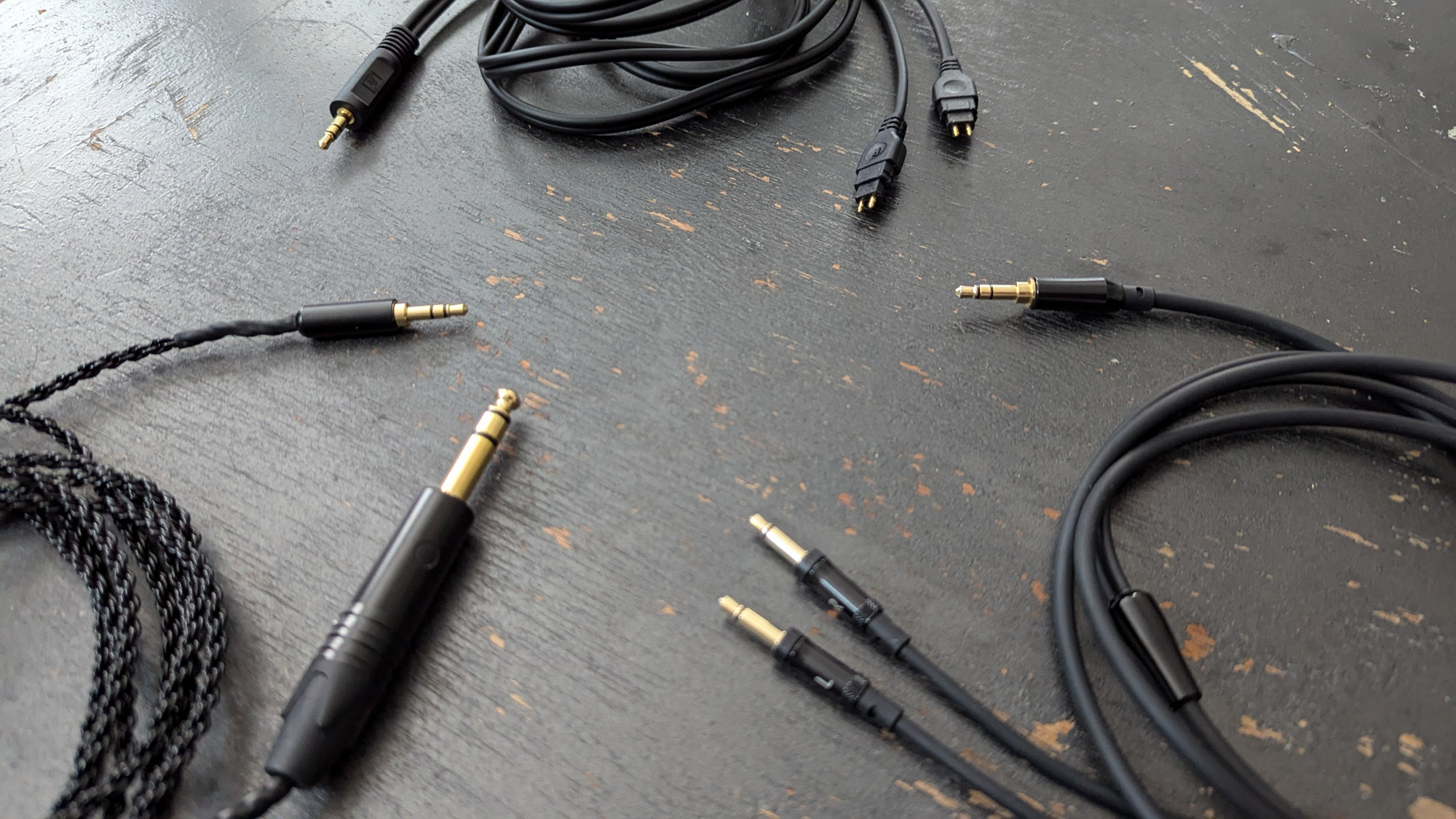
It’s also worth noting how and where headphone cables connect. Some cables only connect to one cup, which can feel a bit less cumbersome. Others may connect to both cups with 3.5mm (1/8-inch), mini-XLR, or other tips. And the cords may terminate on the other end in a number of ways, including a 3.5- or 6.3-millimeter (¼-inch) unbalanced or a 2.5mm or 4.4mm balanced connection.
Obviously, this is important to be aware of before you buy the headphones since you’ll want to match the cord termination to the jack(s) featured in your stereo, amplifier, and/or other source device. But from a practical standpoint, it’s most important to note whether you’re buying wired headphones with a cable that detaches (for easier portability) and locks into the earcups (for security).
Speaking of which, with connectors going into each earcup, be sure to plug the proper (left or right) end into the appropriate cup.
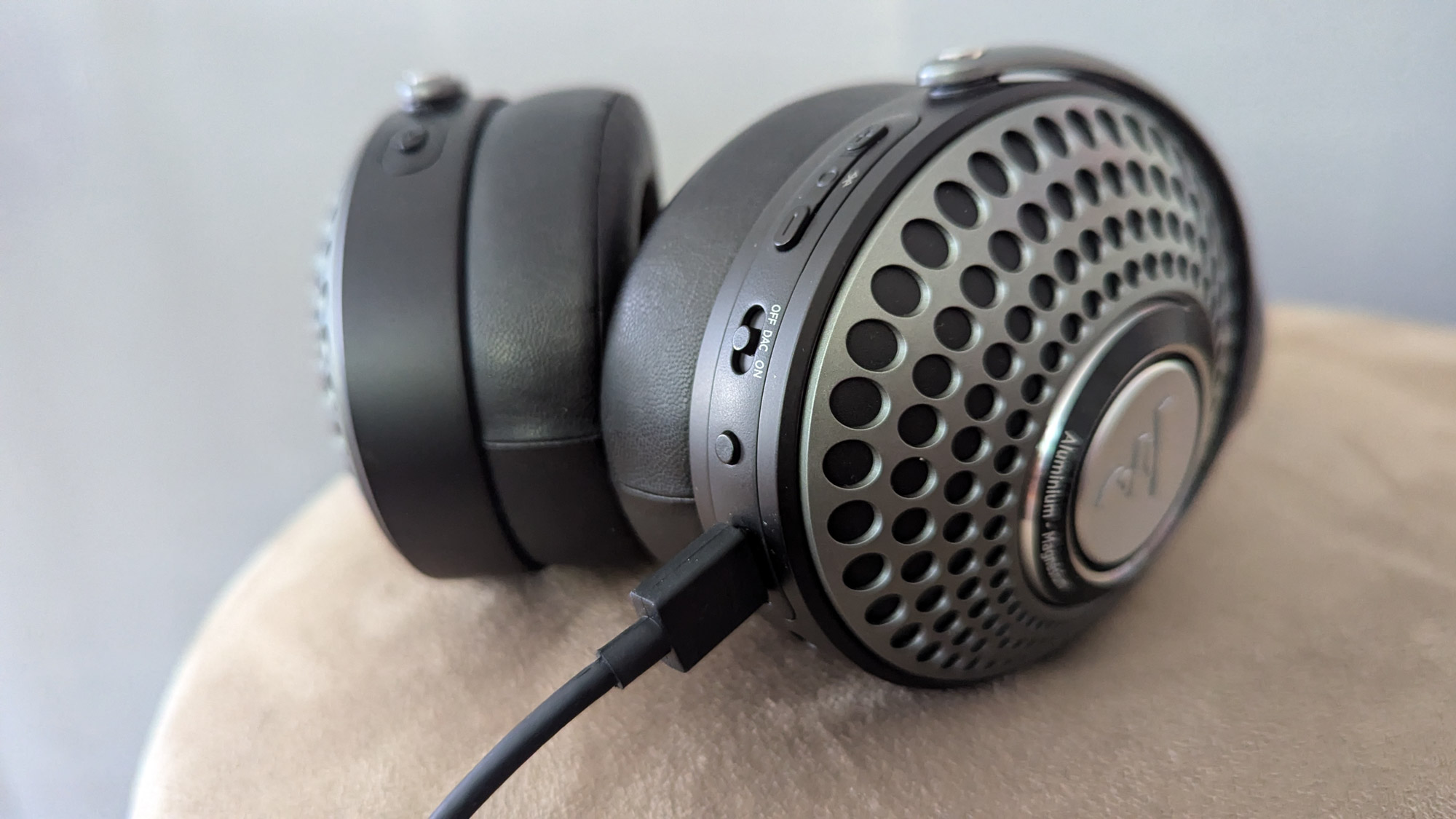
Wireless
Though it’s possible to find open-backed Bluetooth headphones, most are closed-backs. Most likely because they’re used for travel, where wires are especially annoying, and ANC is a highly popular feature. Having said that, many (but not all) wireless headphones include a cord, technically making them both wireless and wired.
So you don’t necessarily have to worry about losing your tunes if/when their battery runs out, though you should know that headphones tend to produce a different sound signature when powered on versus when unpowered and using a cable.
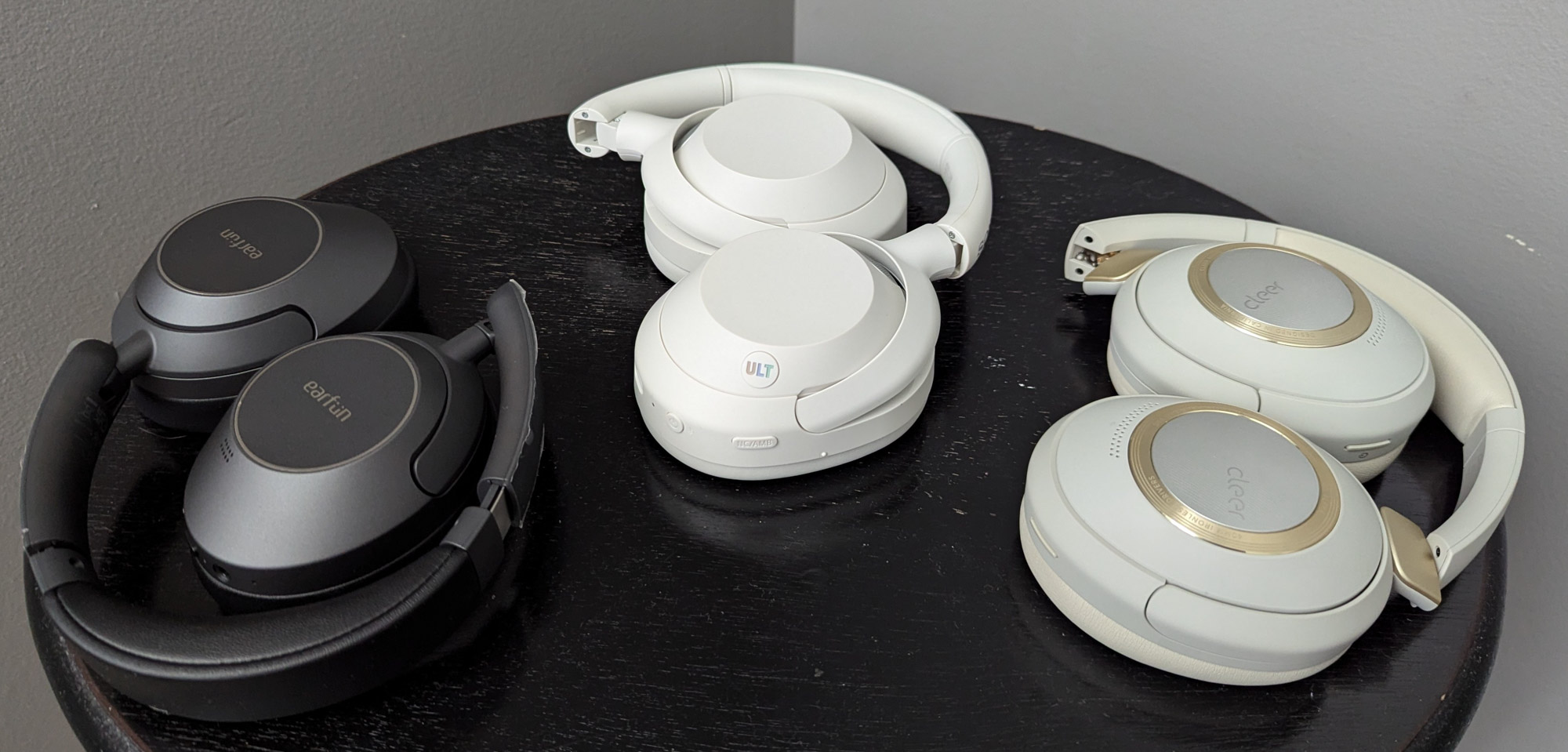
Speaker Driver Type
Without getting too deep into the geeky physics, different types of (headphone) speakers produce sounds differently. Here are the most common ones you’re likely to encounter.
Dynamic
DDs (dynamic drivers) are by far the most popular kind of driver type — accounting for nine of this guide’s top 10 — known for their low price and ability to cover the entire audible frequency range, especially adept in bass response.
Balanced Armature
With precision and clarity, these typically smaller, more efficient drivers excel in the mid to upper frequencies. So if a headphone has multiple/hybrid drivers, the most likely configuration would be a dynamic driver for the low end and at least one BA driver (if not multiple) for the high end.
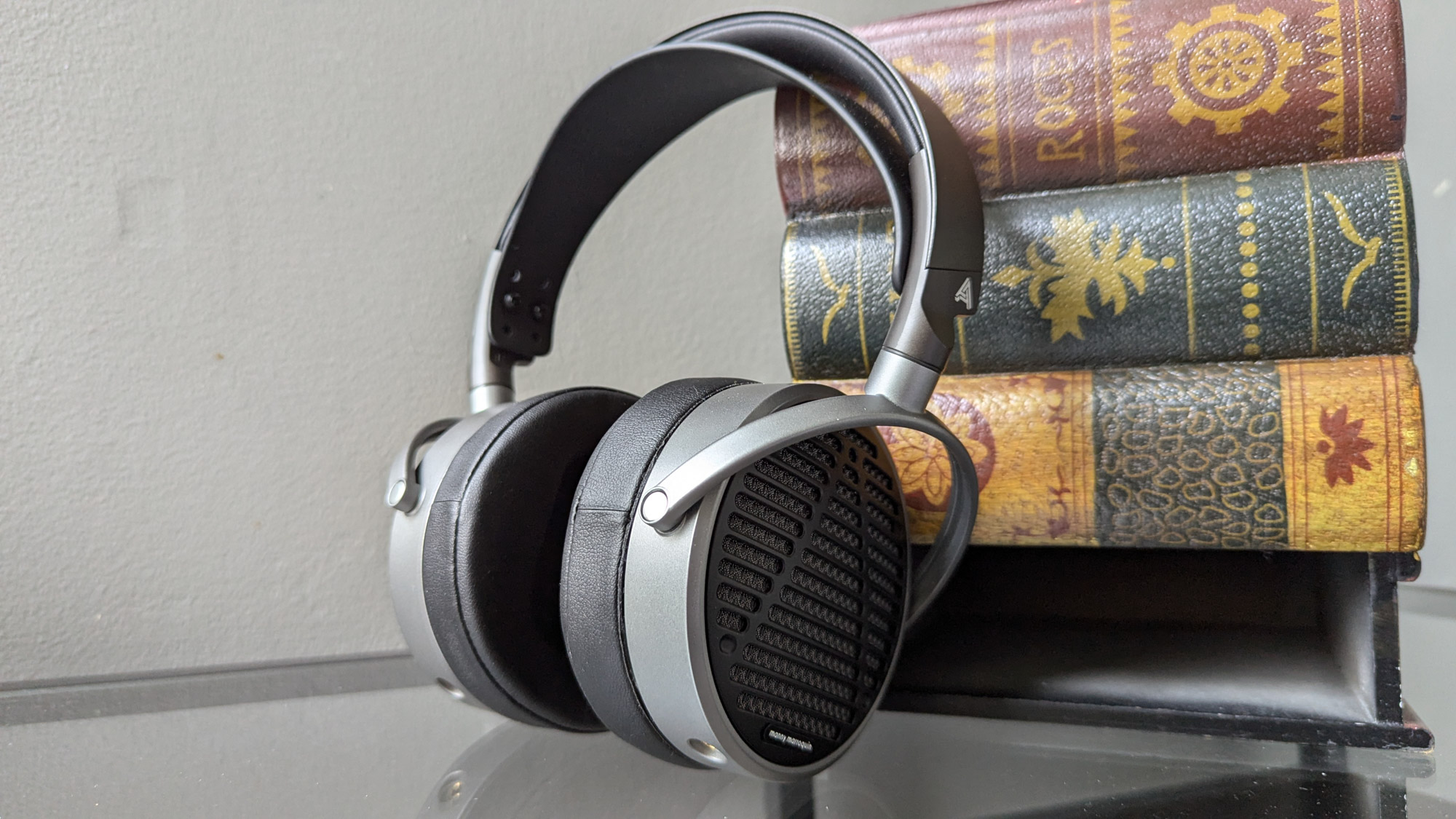
Planar Magnetic
Planars push air differently than a dynamic driver. They’re known for being “faster” and providing even punchier bass and better clarity throughout the midrange and treble. They tend to be more expensive, though affordable planar headphones (under $500) do exist.
Electrostatic
These drivers work on an entirely different physical principle. They produce amazing sound, but by design necessitate larger, more pricey headphones requiring a specialized amplifier to drive them. The world’s most expensive headphones are electrostatic (as noted below in the FAQ section).
Speaker Size
In addition to the type, you may see the size of speakers listed for particular headphones. A typical size for dynamic drivers in over-ear headphones is 40-50mm.
Planar magnetics are larger and flatter, typically twice that size at 80-90mm. And electrostatics take up even more area. But don’t put too much stock in the speaker size of headphones. The resulting sound quality has more to do with the quality and construction of the driver unit than its size.
Frequency Range and Response
The most common range of sound frequencies that headphones can produce is from 20 to 20,000 Hz, which aligns with what we humans (without significant hearing loss) are capable of hearing. By contrast, many bookshelf and floor-standing speakers struggle to produce bass below 100 Hz.
With headphones, don’t make the mistake of thinking that ones listing a low end below 20 Hz are necessarily better/bassier, but they might be able to produce cleaner bass. Likewise, with treble frequencies above 20 kHz.
Lastly, don’t confuse frequency range with frequency response. The latter can be measured with very expensive equipment, as an attempt to display and compare various headphones’ sonic capabilities objectively. Just keep in mind that graphs with squiggly lines don’t matter as much as your subjective opinion about what sounds good (or bad) to you.
Impedance and Sensitivity
Ultimately, these nerdy specifications indicate how loud headphones can get with and without the use of an external amplifier to power them. Impedance is measured in ohms, usually indicated by the Greek letter omega (Ω). The lower the impedance, the easier the headphones are to drive without an amplifier.
For instance, 32Ω or less would probably get plenty loud plugged right into a source device, whereas triple-digit impedance implies the need for an amp to make them truly shine. We say probably, because a set of headphones’ sensitivity is the other piece of the puzzle.
Sensitivity is essentially a measure of the sound pressure level (how loud in decibels) a set of headphones gets when given a set amount of power to produce a particular frequency. A typical sensitivity might be around 100 to 110, plus or minus a couple of decibels.
In other words, if you see headphones that list sensitivity less than 90 dB, that’s a good indicator that you’ll need a relatively powerful amp to bring out their best. Hifiman’s Susvara is a classic example of tricky-to-drive headphones, with a 60Ω impedance (which isn’t too bad) but 83 dB sensitivity. They sound amazing, but you won’t hear much without plugging them into a mighty enough headphone amp.
Fit and Comfort
This is where the rubber meets the road, so to speak. How well your headphones fit and how comfortable they are for long durations determines whether and how much you’ll use them. Here are the four biggest factors in fit and comfort.
Earpads
An entire buying guide could be written just about earpads. It’s an endless topic of discussion on Discord, where folks constantly banter about which stock and aftermarket earpads are best with which headphones. Although cushiness is nice, most headphone earpads feature fairly similar memory foam inside. It’s more about the shape, width, and depth of the padding.
For instance, your ideal earcups might be oval with thinner padding that doesn’t touch your ears, or you might prefer larger circular earcups with thicker earpads that touch your ears a little. Different earpad configurations will affect not only how comfortable your ears are in terms of pressure and temperature but also the headphones’ sound signature.
Also, to that end, you should be aware of the differences various earpad materials make. For example, a more textured material like velour might feel nice but lead to a less bassy sound than the same headphones with a less textured (fake) leather earpad. That’s why some headphones, such as PSB’s M4U 9, come with extra earpads.
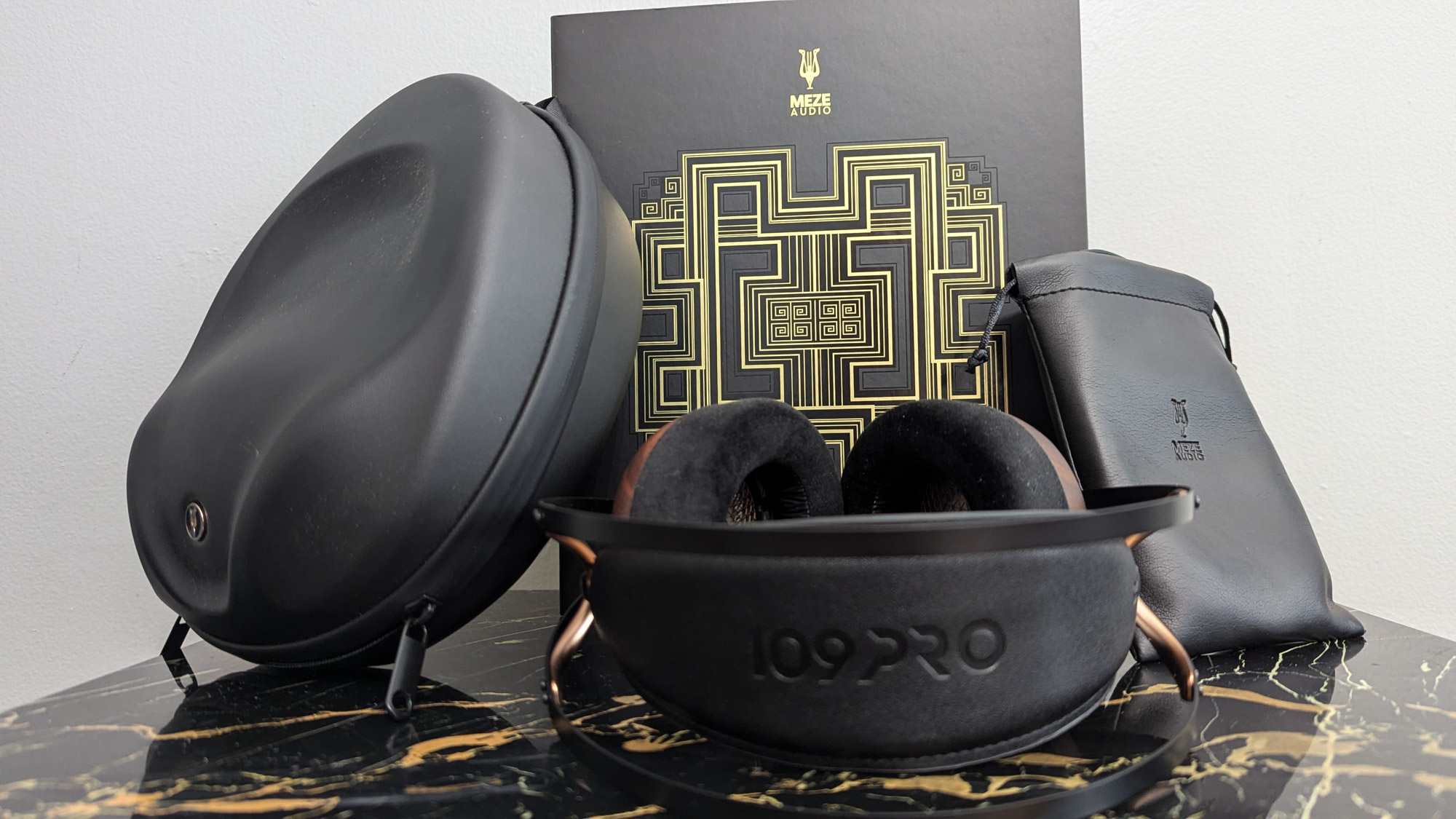
Adjustability
This seems so fundamental, and yet so many headphones get it wrong. In a basic sense, it can be difficult to manipulate the adjustment mechanism one-handed on each side while wearing the headphones. Or perhaps they’re too clicky — or not clicky enough.
Some earcups only swivel back and forth on one axis, which compromises their ability to accommodate more head sizes and shapes. Then again, certain stellar headphones — such as Audeze’s MM-100 and Meze Audio’s 109 Pro — sport a self-adjusting headband that lets you place them directly on your head with absolutely no fussing necessary.
Weight
Similar to backpacking tents, every ounce counts with headphones. Even more so, headphones’ weights are often measured in grams. The average for our 10 tested headphones was about 350 g. For reference, one pound is 454 g.
It may not seem like a ton of weight, but over time (i.e., listening for hours on end), it can literally add up to a pain in the neck. As you glance at various headphones’ specifications, keep in mind that roughly 300-400 g is average.
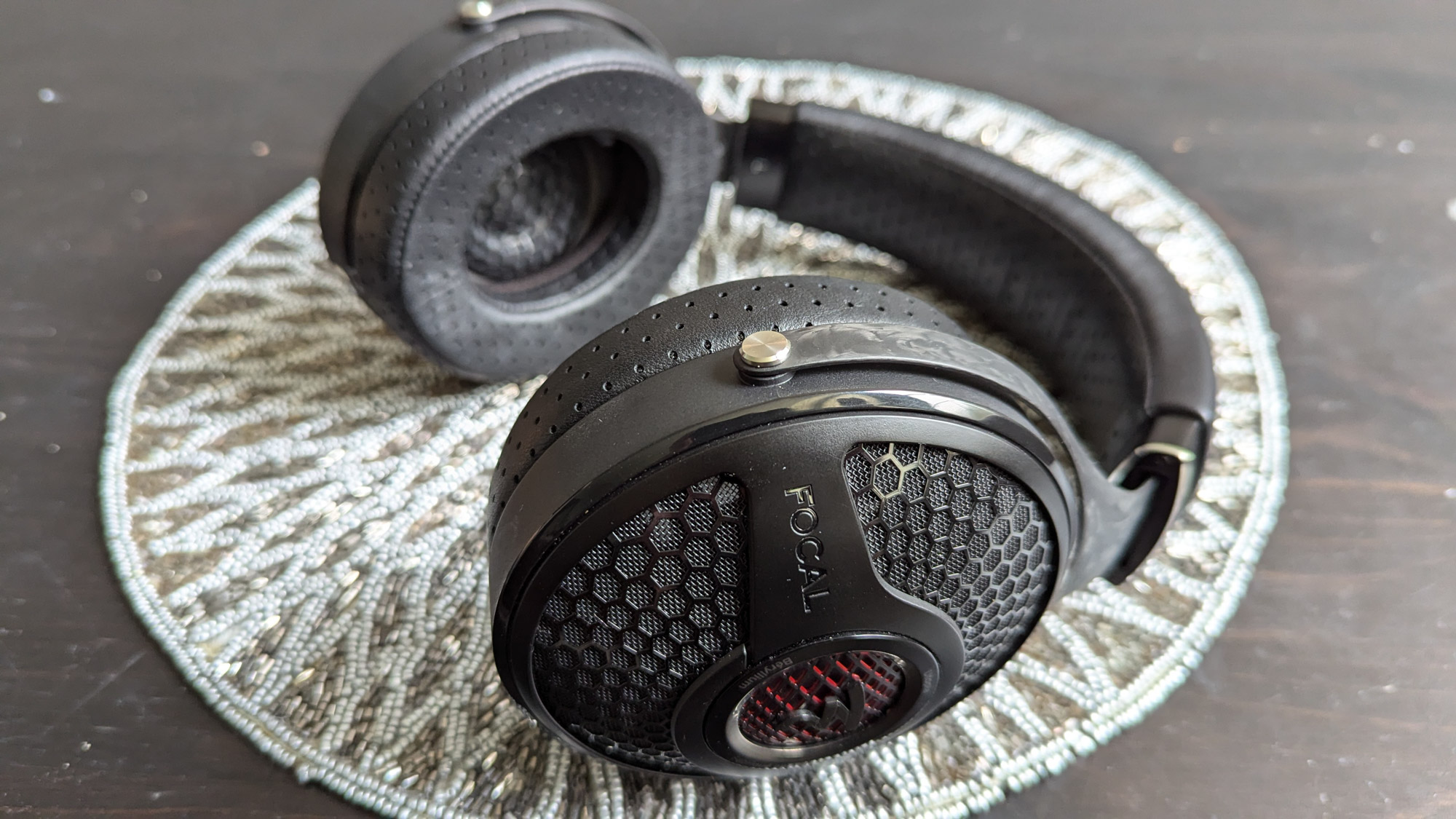
Clamping Force
Working in tandem with the above three factors, how loosely or tightly the headphones’ yoke squeezes against your head is huge in determining your long-term comfort. But it’s a delicate balance. More clamping force can make heavier headphones seem lighter, but they can also feel uncomfortable on the sides of your head.
Conversely, less clamping force can make the headphones so loose that they annoyingly shift around during use. Again, Audeze’s MM-100 is a great example of finding that balance since they weigh only half an ounce less than Focal’s Utopia yet feel way lighter.
Ease of Use
This is more of a factor with powered headphones, operated with a combination of button and touch controls. Once the headphones are paired to your phone, it’s nice to be able to adjust the volume and tracks with an intuitive tap or gesture right on the cans, rather than having to fumble around or even take them off your head.
So button design and layout matters. Likewise, for ANC headphones, it’s convenient to have a dedicated button to cycle through the “normal” (passive noise isolation), active noise cancellation, and transparency modes.
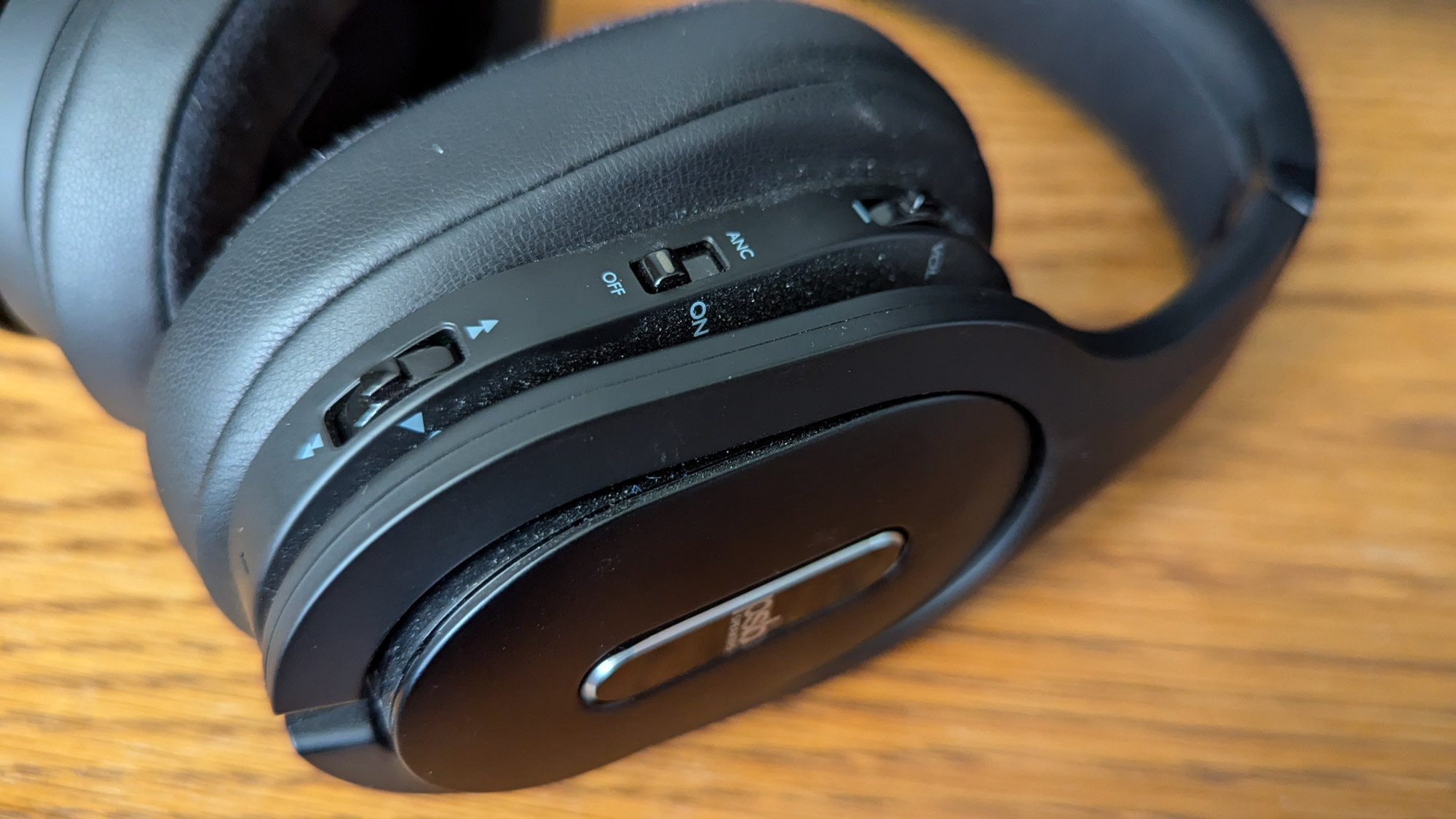
Sound Qualities
If you get the chance to audition headphones before purchasing them, here are some sound attributes to pay attention to.
Clarity and Distortion
Headphones exhibit different sound signatures at different volumes. For instance, at lower volumes, headphones may sound not only clearer but also relatively tame in terms of their bass and treble.
On the opposite end of the spectrum, at higher volumes, they may sound distorted and unpleasant. So, it’s good to test out headphones at a variety of volumes, listening for changes in sound signature and clarity.
Impact and Detail
Depending on your use case, you may want more slam or finesse. If you’re at the gym battling a variety of external sounds, you may prefer more impact. Whereas just chilling at home with your tunes, you might delight in the detail that feels like it brings you into the room of a live performance.
Notice the interplay between these two qualities when listening to the kinds of songs you typically enjoy — ideally where you typically enjoy them.
Brightness and Darkness
Brightness describes a sense of both clarity and detail in the upper frequencies (i.e., treble). To say headphones are bright means that they’re able to retrieve and produce clear, open high notes. “Sparkly” is right at the precipice of being too much detail.
And for most folks, “sizzle” means it goes too far, portraying high-end frequencies in a way that comes off as sibilant and harsh. Conversely, if headphones are dark, they lack openness and detail — similar to how you would sound if you cupped your hands over your mouth while talking.
Warmness and Coolness
Warm refers to how “rich,” “beefy,” or “fun” a particular set of headphones sounds. Conversely, a cool sound might otherwise be described as “flat,” “pale,” or “anemic.” In the end, these temperature-minded terms are just an attempt to describe whether headphones produce a fuller or thinner sound.
Lows, Mids, and Highs
Spoiler alert: It’s all about what puts a smile on your face — or makes you cringe. What’s too much bass or treble for one person might be not nearly enough for the next person. The key is to know what to listen for, which comes with experience and familiarity.
For instance, with bass, you might prefer more sub-bass rumble or the tight, impactful slam of a kick drum. If you listen to music that heavily features pianos, trumpets, acoustic guitars, and/or vocalists, mid-level frequencies are important to you. (The Sennheiser HD 6XX reigns supreme in that region.) And lastly, a crisply rattling high hat might sound delightful or torturous to you.
All that to say, everyone has their own desires, tolerances, and abilities to hear various frequencies. So it’s way more instructive and descriptive to apply some combination of the above terms when expressing what you like/want.
For example, you might say that you enjoy a warm, impactful bass, pronounced mids, or a clear, bright treble. That sounds more precisely like a sound signature that could potentially match your tastes to a shortlist of headphones, especially when combined with a particular price point.
Collection Size and Budget
One assumption we might make is that you’re only in the market for one set of headphones. But that’s not entirely realistic. For instance, you might have a set of bone conduction headphones for mountain biking, wireless earbuds for the office, and a set of nicer over-ears for home use.
When putting together your headphones budget, consider whether multiple sets might work for you. Even if they’re for the same use case, different headphones offer different listening experiences. So, maybe you cheap out on one set and splurge on the other one.
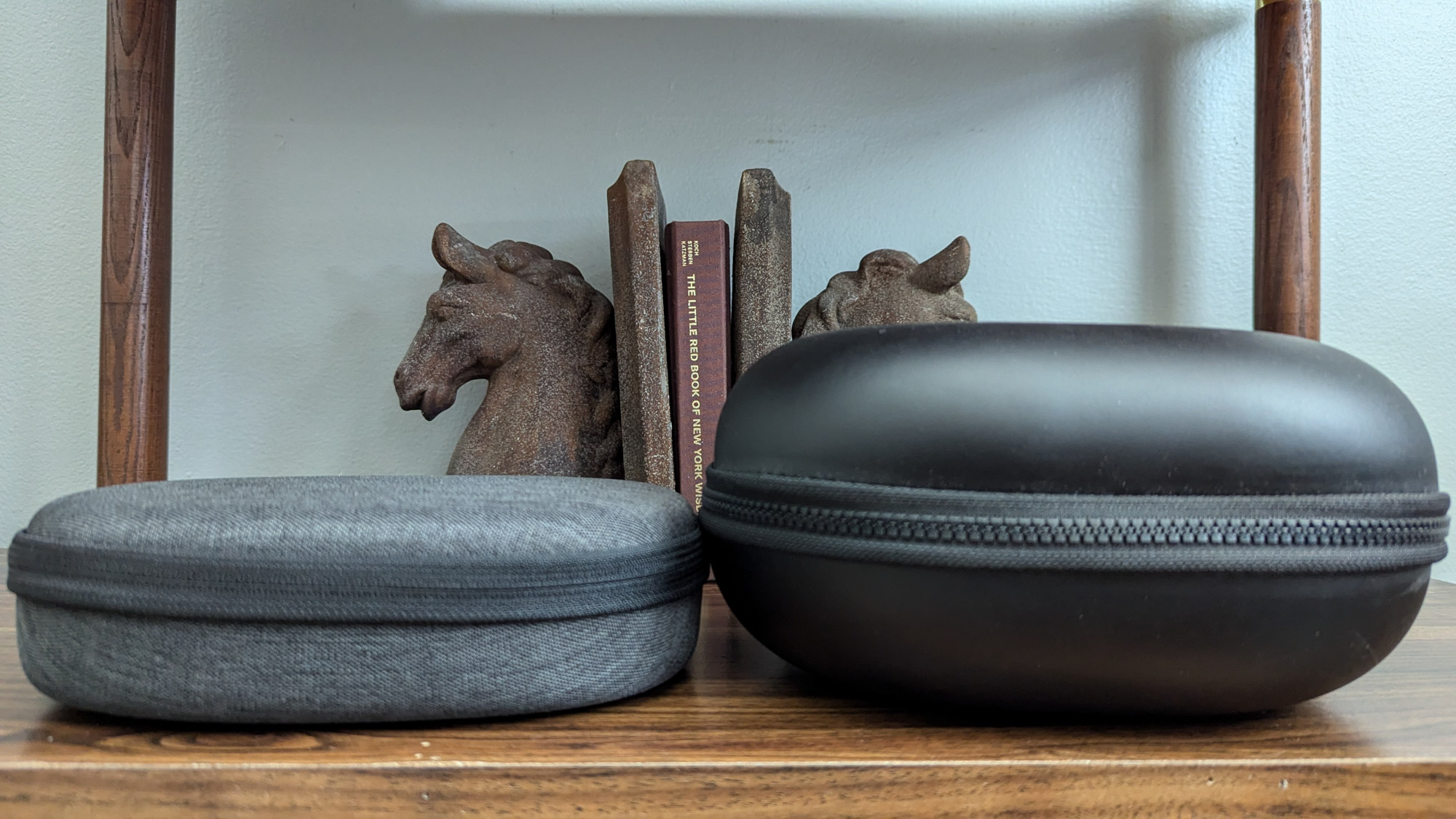
Portability
In general, most headphones are pretty portable. For over-ears, the big factor is whether they fold and/or have a case. That’ll determine if you’re confident about tossing them into your backpack when you travel — especially if it’s a hard case versus a mere soft pouch.
Speaking of which, we like cases with inner compartments, either a removable soft pouch to go inside the hard case (like with the Meze 109 Pro) or even just a little webbing to store extra cords and adapters (like with the EarFun Wave Pro).
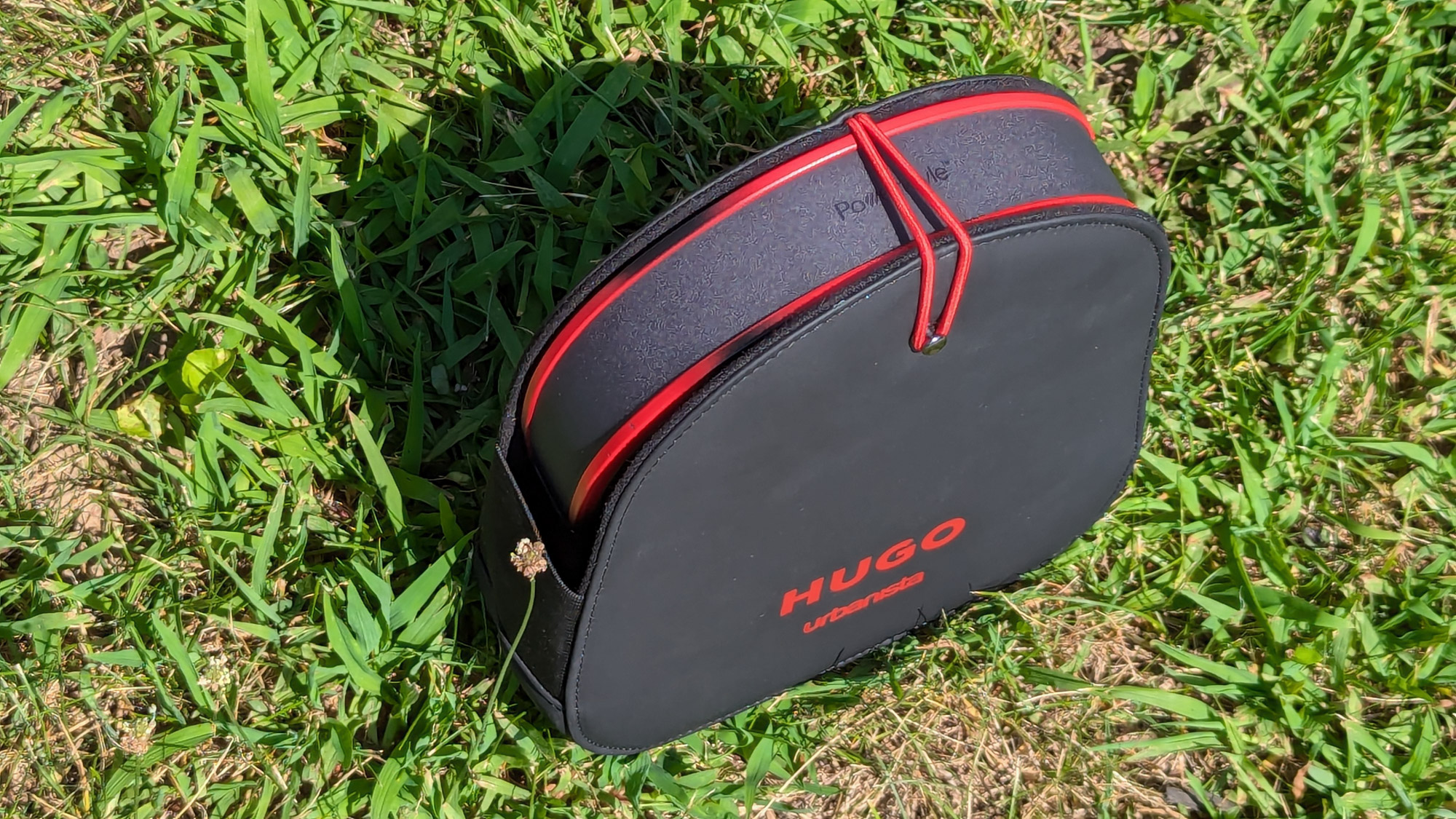
Price & Value
If we remove the curve-skewing Focal Utopia, the average price of the nine remaining headphones we tested was just under $400. That’s a bit high compared to what you might randomly find in the marketplace. But you don’t need to spend that to find a solid pair of headphones.
Budget
As evidenced by the EarFun Wave Pro ($80), Sony Ult Wear ($200), and Sennheiser HD 6XX ($219) — not to mention a few of the solid headphones that didn’t make our final cut for one reason or another — there are plenty of great headphones out there for $200 or less.
The EarFun Wave Pro, for example, delivers clear, balanced sound, a comfortable fit, and user-friendly controls. You won’t get premium materials and top-tier sound, but this category should provide more than enough for the casual listener.
Mid-Tier
The next level up, spending $300-500, often gets you higher quality materials and sound. The Audeze MM-100 ($399) sits right in the middle of this price range and is an excellent example of what you get for your money.
These headphones offer rich, full sound that can compete with headphones in almost any price range. And while they’re fairly heavy at over a pound, they deliver sound that audiophiles will definitely appreciate.
Premium
If money is no object, the sky’s the limit when it comes to price. The priciest option on this list, the Meze Audio 109 Pro ($799), is made up of beautiful metallic and wooden access with a vegan leather headband and bougie velour earcups. The sound is perfectly balanced, with bass and treble taking priority over the perfectly flat midrange. Plus, they might be the most comfortable headphones on this list.
Ultimately, though, you should feel good about your purchase, whether that’s from saving or spending money. Aim to buy the best headphones that fit your current budget and what you want out of a pair of headphones. You can always trade in and upgrade later.
Frequently Asked Questions
The legendary Warwick Acoustics Aperio ($36,000), Hifiman Shangri-La ($50,000), and Sennheiser HE 1 ($59,000) each push the boundaries of what’s technologically possible in personal audio equipment. Incorporating premium materials, these three ultra expensive systems each include a set of highly advanced electrostatic headphones paired to a proprietary amplifier.
And while five-figure price tags don’t necessarily guarantee superiority, many audiophiles would argue that at least one of these headphones systems is the “best” — or at least in a class by themselves.
Headphones provide a very personal listening environment. So whereas the audio produced by speakers is greatly affected by the acoustics of the room in which they’re placed, headphone audio tends to deliver a more consistent, intimate experience.
Additionally, some songs are mixed in a way that plays off of fun stereo and spatial effects that are easier and more practical to replicate with headphones.
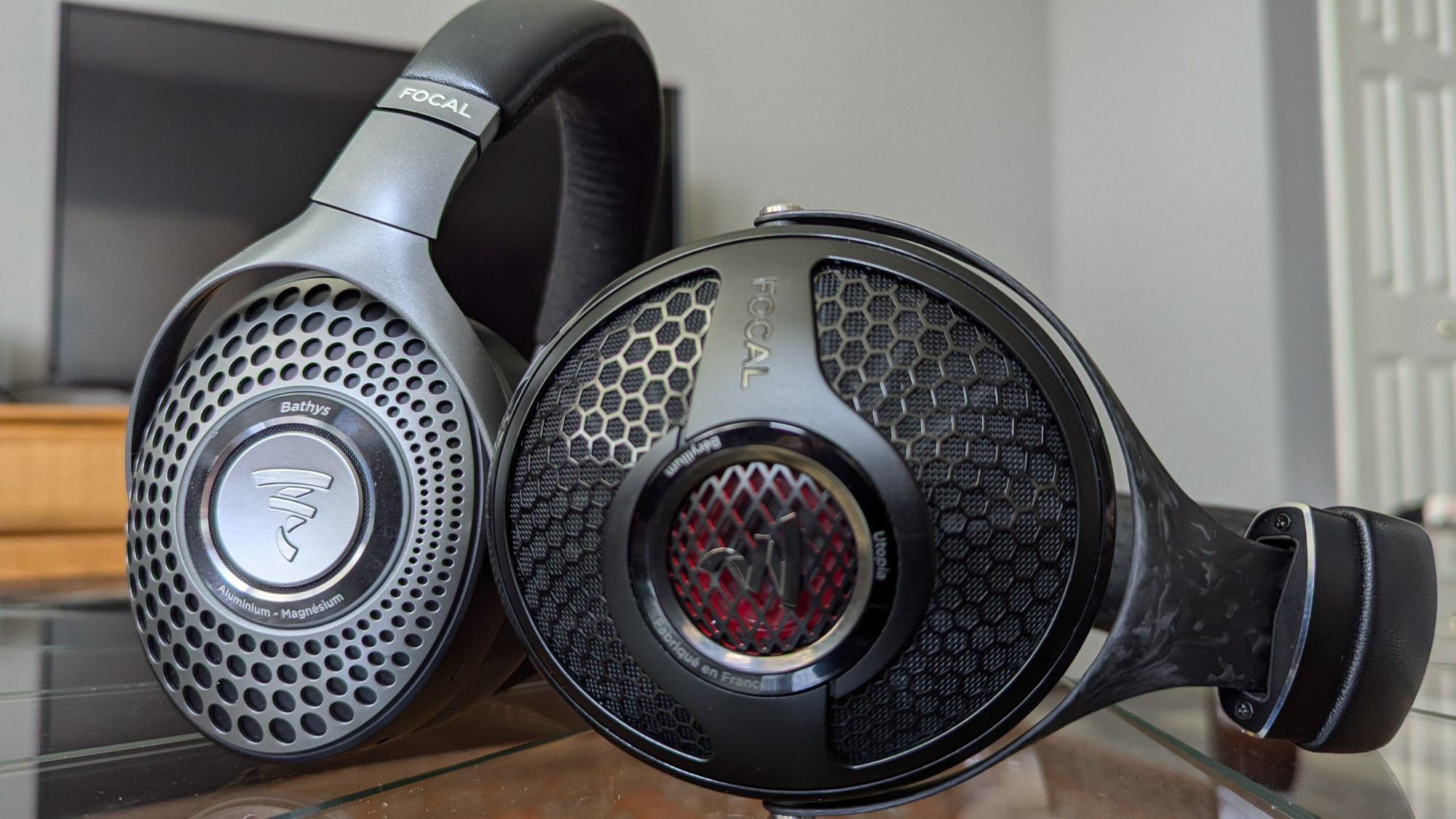
In several ways, yes. First, rather than requiring a pairing process, using wired headphones is as easy as plugging them into a source device with an audio jack. Second, because they don’t need/use their own batteries, you don’t need to worry about how long you’re listening.
And since wireless headphones work off rechargeable batteries that’ll degrade over time and usually can’t be replaced, wired headphones will tend to last and be relevant longer.
In terms of the sound quality, naturally that’s a subjective matter. But as a general rule, wired headphones tend to offer better quality for the money. That’s because the wires are able to transmit a higher quality signal without any loss of audio data.
Or to put it another way, wireless headphones can offer adequate to amazing sound quality — even as compared with even a few years ago — but there’s always a price to pay for the convenience of untethered audio.
In terms of portability, in-ear headphones will always take up less space than their on- and over-ear counterparts. But fit and feel are completely subjective. Some folks have a difficult time finding earbuds that fit well or feel good in their ears. Others are sensitive to the weight and clamping force of on- and over-ear headphones — plus how they can make their ears warm during long listening sessions.
So, what’s better for you takes into account what matters most to you regarding portability, fit, and feel. To help you determine that, consider where and for how long you plan to listen to music.

The Best Workout Headphones of 2025
We tested the best workout headphones of 2025 with options for every budget and athlete. Top picks include Jaybird, Bose, and more!
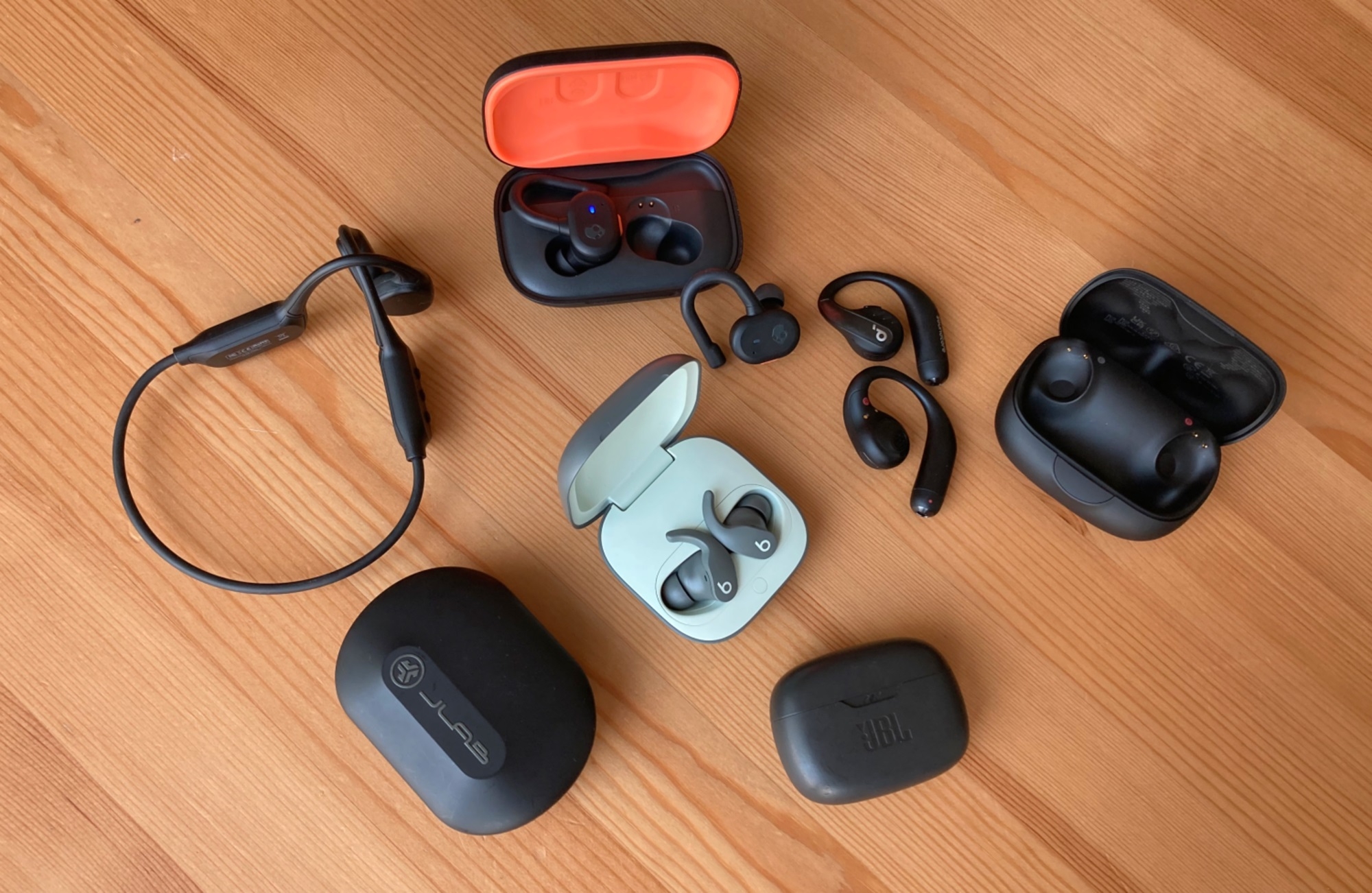
The Best Running Headphones of 2024
We tested and ranked the best running headphones of 2024, including pairs from Beats, SoundCore, and JBL.
